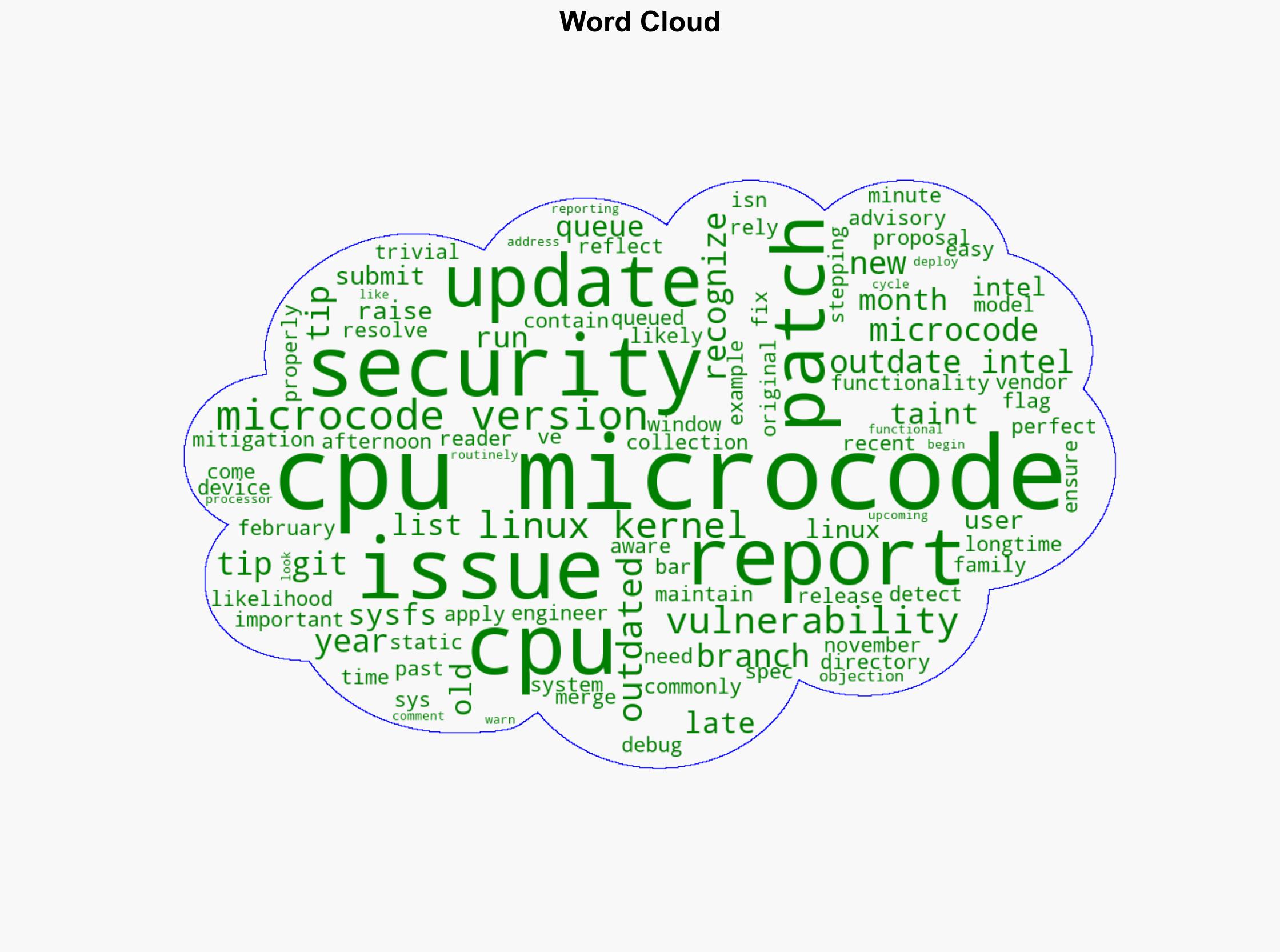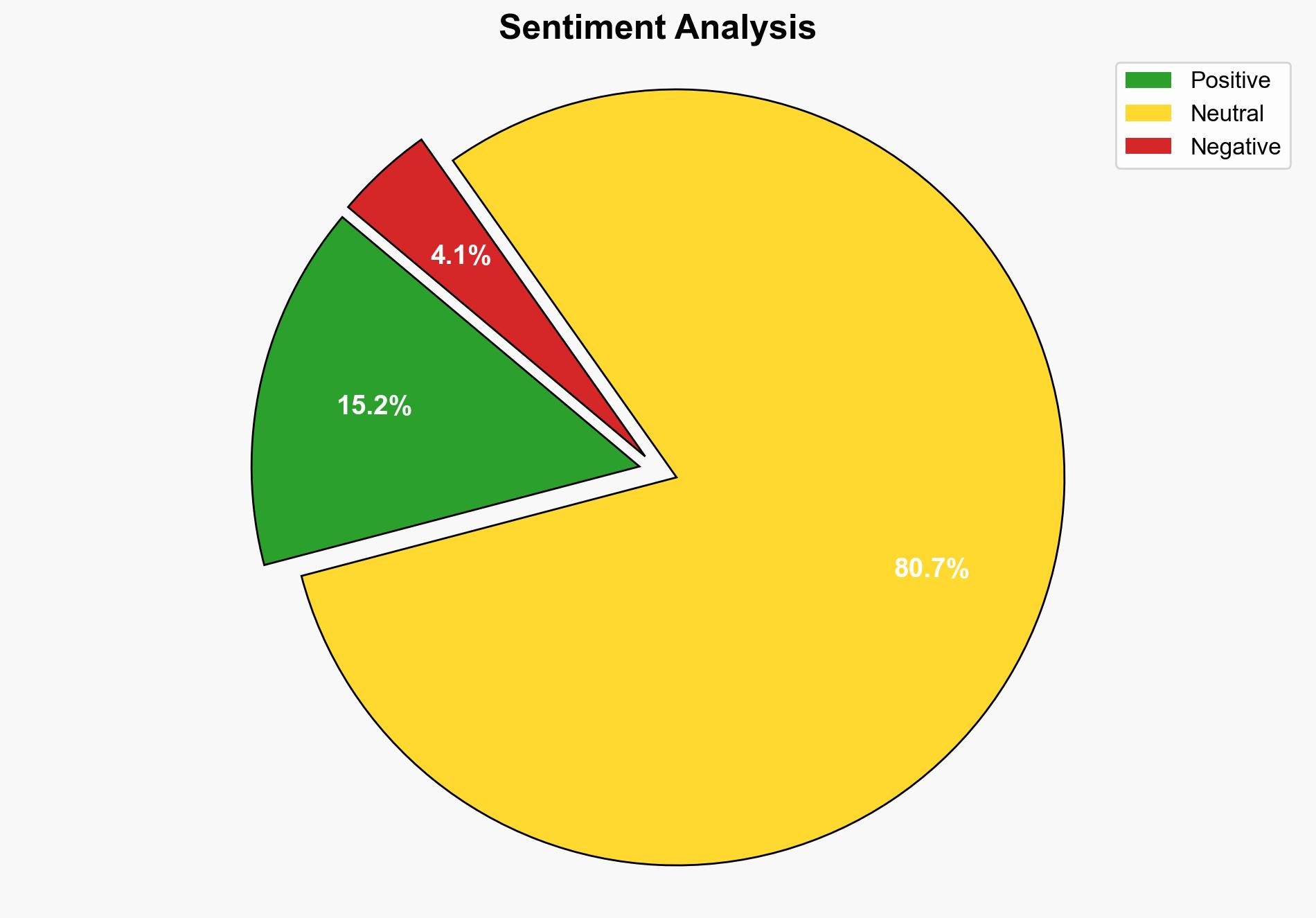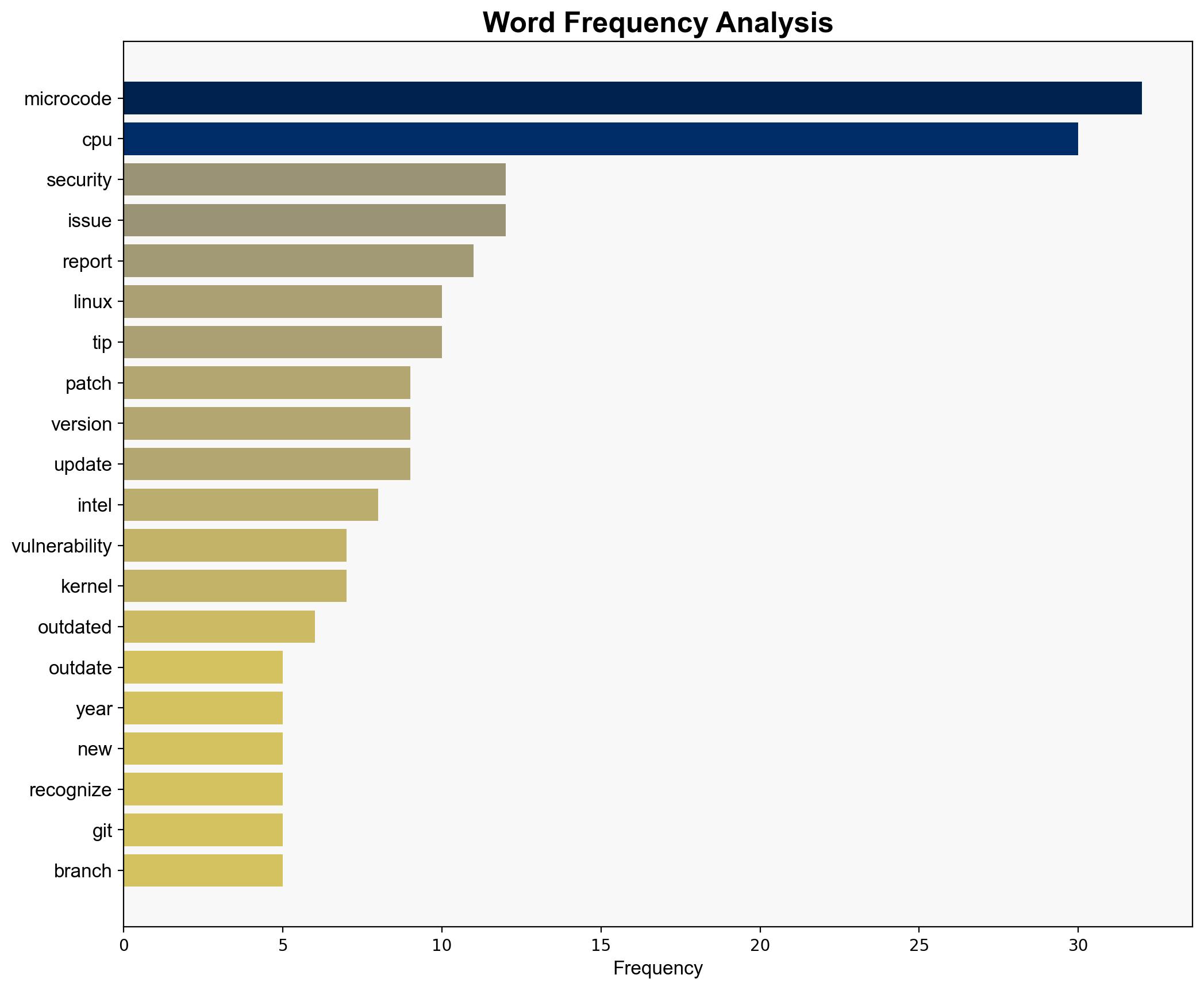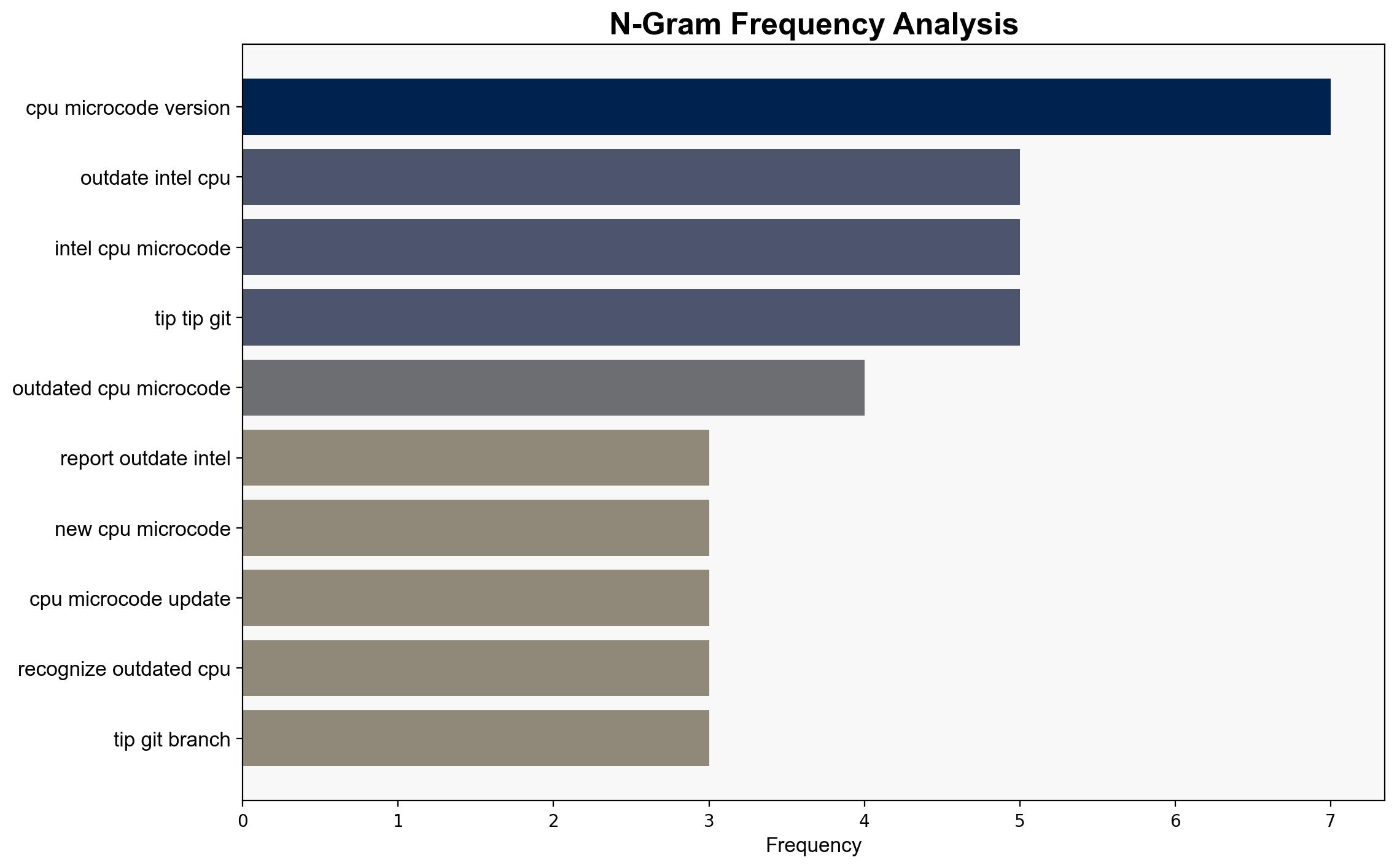Linux Patch Queued To Report Outdated Intel CPU Microcode As A Vulnerability – Phoronix
Published on: 2025-04-21
Intelligence Report: Linux Patch Queued To Report Outdated Intel CPU Microcode As A Vulnerability – Phoronix
1. BLUF (Bottom Line Up Front)
A new Linux patch is set to identify outdated Intel CPU microcode as a security vulnerability. This development aims to enhance system security by alerting users to potential risks associated with outdated microcode, which may lack critical security updates. The patch is expected to be integrated into the upcoming Linux kernel cycle, providing a proactive measure for maintaining system integrity.
2. Detailed Analysis
The following structured analytic techniques have been applied to ensure methodological consistency:
Analysis of Competing Hypotheses (ACH)
The primary hypothesis is that outdated microcode poses a security risk due to unpatched vulnerabilities. Alternative hypotheses include the possibility that the risk is overstated or that other mitigation strategies could be more effective. Evidence supports the primary hypothesis, as outdated microcode has been linked to unresolved security issues.
SWOT Analysis
Strengths: Proactive identification of vulnerabilities; improved system security.
Weaknesses: Reliance on timely updates from Intel; potential for false positives.
Opportunities: Enhanced user trust in Linux systems; potential for broader application across other CPU vendors.
Threats: Delayed patch adoption; potential exploitation of unpatched systems.
Indicators Development
Key indicators include the frequency of microcode updates, user adoption rates of the patch, and reports of security incidents linked to outdated microcode. Monitoring these indicators will help assess the effectiveness of the patch and identify emerging threats.
3. Implications and Strategic Risks
The integration of this patch into the Linux kernel could set a precedent for other operating systems, emphasizing the importance of keeping microcode up to date. However, there is a risk of increased system instability if updates are not managed properly. Additionally, the patch may prompt adversaries to seek alternative vulnerabilities, necessitating ongoing vigilance.
4. Recommendations and Outlook
- Encourage timely adoption of the patch by users and organizations to mitigate security risks.
- Develop contingency plans for potential system instability following the patch implementation.
- Monitor for any shifts in adversary tactics that may arise as a result of this patch.
- Scenario-based projections suggest that in the best case, widespread adoption will significantly reduce security incidents, while in the worst case, delayed adoption could lead to continued vulnerabilities.
5. Key Individuals and Entities
Intel engineers are crucial in maintaining and updating the microcode list to ensure the patch remains effective. Their role is essential in reflecting the latest microcode versions accurately.
6. Thematic Tags
(‘cybersecurity’, ‘system vulnerabilities’, ‘Linux kernel’, ‘Intel microcode’, ‘security patches’)





